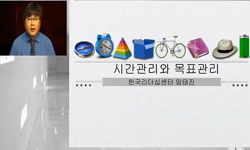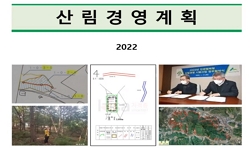오랜 기다림이 지속되는 서비스 상황에서 소비자들은 앞으로 나아가지 못하고 줄이 더디게 줄어든다고 느끼기 쉽다. 이는 목표가 존재하는 웨이팅 상황에서 기다림 수용 정도를 낮추는 요...
http://chineseinput.net/에서 pinyin(병음)방식으로 중국어를 변환할 수 있습니다.
변환된 중국어를 복사하여 사용하시면 됩니다.
- 中文 을 입력하시려면 zhongwen을 입력하시고 space를누르시면됩니다.
- 北京 을 입력하시려면 beijing을 입력하시고 space를 누르시면 됩니다.

웨이팅의 이동 관점이 기다림 수용 정도에 미치는 효과 = The Effect of Movement Perspectives in Waiting on the Acceptability of Waiting
한글로보기https://www.riss.kr/link?id=A109606237
- 저자
- 발행기관
- 학술지명
- 권호사항
-
발행연도
2025
-
작성언어
Korean
-
주제어
기다림 ; 웨이팅 ; 웨이팅 정보 ; 이동 관점 ; 자아 이동 ; 사건 이동 ; 지각된 속도감 ; 목표 ; 기다림 수용 정도 ; Waiting ; Waiting information ; Event moving perspective ; Ego moving perspective ; Perceived velocity ; Acceptability of waiting ; Framing effect
-
등재정보
KCI등재
-
자료형태
학술저널
-
수록면
17-40(24쪽)
- 제공처
-
0
상세조회 -
0
다운로드
부가정보
국문 초록 (Abstract)
오랜 기다림이 지속되는 서비스 상황에서 소비자들은 앞으로 나아가지 못하고 줄이 더디게 줄어든다고 느끼기 쉽다. 이는 목표가 존재하는 웨이팅 상황에서 기다림 수용 정도를 낮추는 요인이 될 수 있다. 본 연구는 웨이팅 정보를 제공할 때 이동 관점이 소비자 태도에 미칠 수 있는 영향을 탐구하고, 이를 개선할 방안을 제시하고자 하였다. 연구1에서는 2(이동 관점: 자아 이동 vs 사건 이동) 집단 간 설계를 통해 기다림 수용 정도를 살펴보았다. 구체적으로, 사건 이동 관점으로 제시되었을 때에 비해, 자아 이동 관점으로 제시되었을 때 목표와 빨리 근접해지고 있다는 속도감이 빠르게 지각되어, 결과적으로 기다림 수용 정도가 높아졌다는 사실을 확인하였다. 연구 2에서는, 자극 및 측정 문항을 보완하여 이동 관점과 지각된 속도감의 효과를 재검증하였다. 그 결과, 이동 관점과 지각된 속도감의 역할을 보다 명확히 할 수 있었으며 이는 숫자 제시 방식이나 정보 이해도에서 오는 차이가 아님을 밝힐 수 있었다. 이를 통해, 목표에 근접해지고 있는 상황에서 이동 관점은 사건 이동 보다는 자아 이동을 제시하는 것이 더욱 효과적임을 시사하고 있다. 본 연구에서는 웨이팅 어플과 마케터들이 사용하는 웨이팅 정보에서 현실적으로 적용 가능한 이동 관점이 기다림 수용 정도를 향상시킬 수 있음을 시사하며 소비자 대기 경험을 개선할 수 있는 실무적인 시사점을 제공한다.
다국어 초록 (Multilingual Abstract)
Consumers in prolonged waiting situations often feel as though they are not making progress and that the line is moving too slowly. This perception can make it more difficult for consumers to accept the wait in goal-oriented waiting situations. This s...
Consumers in prolonged waiting situations often feel as though they are not making progress and that the line is moving too slowly. This perception can make it more difficult for consumers to accept the wait in goal-oriented waiting situations. This study explores the effects of movement perspectives in presenting waiting information on consumer attitudes and proposes strategies for improvement. Study 1 employed a 2 (movement perspective: ego-moving vs. event-moving) between-subjects design to examine wait acceptability. The results showed that when waiting information was presented from an ego-moving perspective, consumers perceived a greater sense of velocity toward the goal compared to the event-moving perspective, ultimately increasing their wait acceptability. Study 2 refined the stimuli and measurement items to reconfirm the effects of movement perspective and perceived velocity. The findings further clarified the role of movement perspectives and perceived velocity, demonstrating that the effects were not attributable to differences in numerical presentation or comprehension of the information. These results suggest that in situations where progress toward a goal is perceived, presenting waiting information from an ego-moving perspective is more effective than an event-moving perspective. This study offers practical implications by highlighting how movement perspectives, when applied to waiting apps and marketer-provided waiting information, can enhance wait acceptability and improve consumer waiting experience.
동일학술지(권/호) 다른 논문
-
공적 자의식과 사회적 지배지향이 서비스 직원에 대한 소비자 공격성에 미치는 영향
- 한국소비자학회
- 권용주
- 2025
- KCI등재
-
서비스 로봇의 비인간적 외형의 효과: 당혹 및 비당혹 제품 비교를 중심으로
- 한국소비자학회
- 최정현
- 2025
- KCI등재
-
브랜드 유형(명품 vs. 중저가)과 고객-직원과의 물리적 근접성(가까움 vs.멂)이 서비스 만족도에 미치는 영향
- 한국소비자학회
- 박현아
- 2025
- KCI등재
-
스마트가전에 대한 지각된 혜택, 위험, 사용만족도와 소비자 혁신성의 조절효과에 관한 연구
- 한국소비자학회
- 진신
- 2025
- KCI등재




 KCI
KCI KISS
KISS






